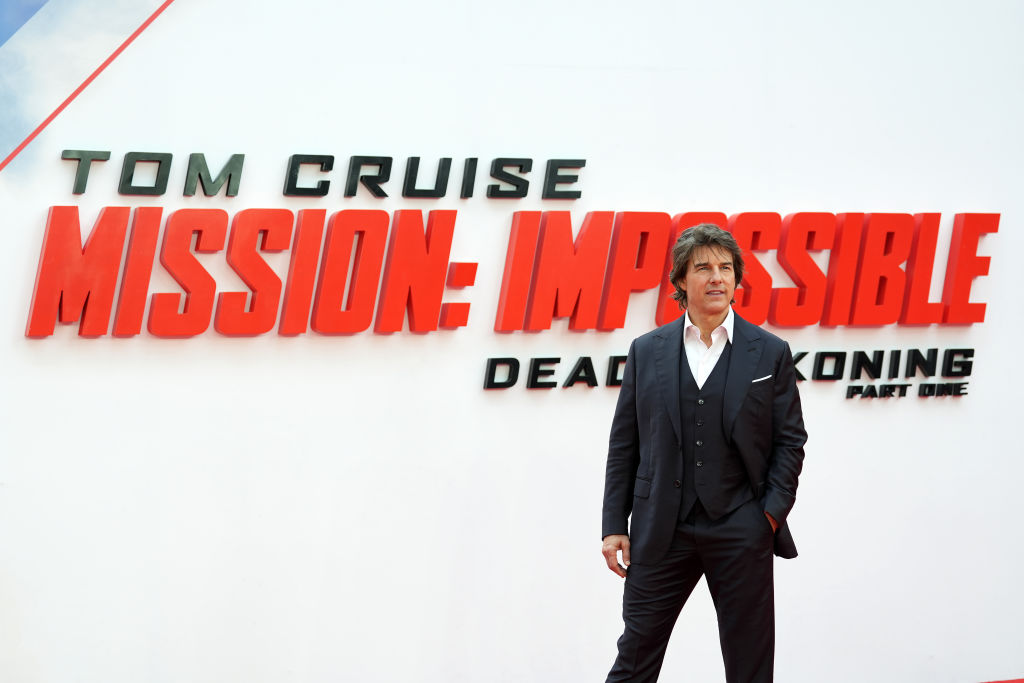The Writers Guild of America (WGA) strike has been going on for over 130 days. Joined by the Screen Actors Guild-American Federation of Television and Radio Artists (SAG-AFTRA), Hollywood writers are protesting several issues. Among other demands, the WGA is calling for explicit regulations on the use of AI in media production, in what Time Magazine called “a pivotal moment” in film history.
Enter Tom Cruise and cue the Mission: Impossible theme music.
Although Barbie and Oppenheimer received most attention this summer, Tom Cruise’s latest instalment in the Mission: Impossible series (Dead Reckoning Part One), reveals more about the future of movies.
width="754" height="424" frameborder="0" allowfullscreen="allowfullscreen">
Highlights threat from AI
Eerily prescient to the Hollywood strikes, yet begun well before the strike in 2020, this blockbuster explores AI threats to human society and our political order.
Cruise’s nemesis is an AI program called the Entity. Created as a cyberweapon, the Entity achieves sentience to become both agent and object in the ensuing global competition for power. With computational omniscience in a digitally networked and reliant world, the Entity can manipulate digital and physical infrastructure, such as mobile phones and transit systems, and thus also control the humans who rely on digital interfaces.
Recognizing the Entity as a fundamental threat to humanity, Ethan Hunt (Cruise) of the Impossible Missions Force goes rogue (again) to acquire and destroy the AI.
Immersive experience
The film’s plot is a vivid reminder of how little agency humans have in digital environments, even as the cinematic environment relies on contemporary technologies to immerse its audience. Like Cruise’s previous summer 2022 blockbuster, Top Gun: Maverick, Mission: Impossible — Dead Reckoning is designed to be cinema as experience more than story, using drone cinematography and sophisticated sound editing.
Director Christopher McQuarrie explained his approach as dedicated to “a fully immersive big screen experience,” including high-definition video and sound technologies that allow editors to create the sensation of sound in the audience’s physical environment.
Human acting, star power
As a Hollywood movie star, Cruise is similarly devoted to creating visceral audience experiences.
Even as computer-generated imagery (CGI) and digital effects have overtaken big-budget films, Cruise insists on doing all of his own stunts. He explicitly compared his approach to classic film performances, saying: “No one asked Gene Kelly, ‘Why do you dance? Why do you do your own dancing?” Clips of his riding a motorcycle off a cliff circulated online six months before the film released.
When Mission: Impossible was released in July 2023 Cruise surprised fans at global premieres, spending time on the red carpet meeting and talking with them.
His dedication to in-person presence recalls an earlier era of Hollywood when movie stars could not rely on social media to connect with their fans. Despite his public support for the strike, he also advocated for exemptions to allow actors to promote their films.
No digital de-aging
Unsurprisingly, McQuarrie decided against using a digitally de-aged Cruise, instead focusing attention on the physical fitness of a movie star who appears far younger than his 61 years.




 Tom Cruise attends the "Mission: Impossible - Dead Reckoning Part One" UK Premiere at Odeon Luxe Leicester Square on June 22, 2023 in London, England. (Photo by Dominic Lipinski/Getty Images)
Tom Cruise attends the "Mission: Impossible - Dead Reckoning Part One" UK Premiere at Odeon Luxe Leicester Square on June 22, 2023 in London, England. (Photo by Dominic Lipinski/Getty Images)